Welcome to the captivating world of the Small Minivet, a delightful bird species belonging to the cuckoo shrike family.
With its vibrant colors and enchanting habits, this petite creature brings joy to birdwatchers and nature enthusiasts alike as it flits through the forests and woodlands of Asia.
Admire its striking plumage, with males boasting bold black and orange-red coats and females donning subtle gray and yellow hues. Beyond its appearance, the Small Minivet showcases remarkable intelligence in feeding and breeding behaviors.
Join me as we explore the fascinating distribution of this charming bird across diverse habitats, dietary preferences, and intriguing mating rituals. Get ready to be enchanted by the Small Minivet’s beauty and intelligence as we embark on this journey of discovery.
Physical Characteristics of Small Minivet
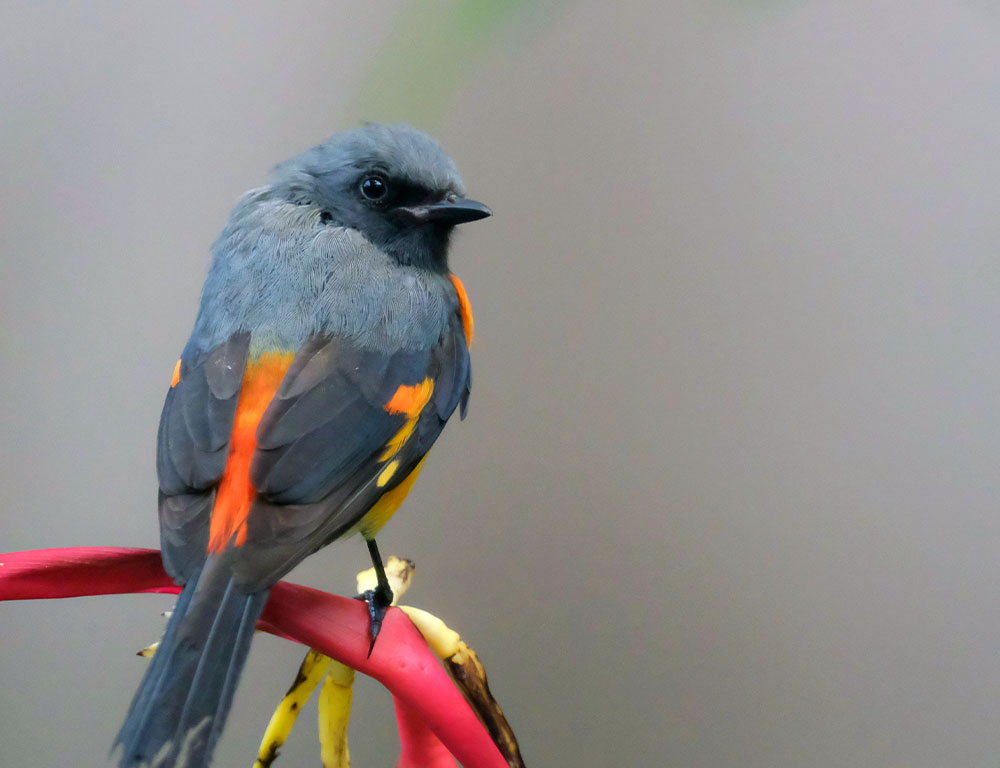
The Small Minivet (Pericrocotus cinnamomeus) is a charming bird with striking colors and elegant features.
Let’s summarize its physical characteristics:
Size
Both male and female Small Minivets are relatively small birds, with a wingspan typically measuring between 16 to 18 centimeters.
Coloration
- Male: The upper parts of the male Small Minivet are black, including the head and mantle, while the lower back, rump, and tail are vividly orange-red. The wings feature black feathers outlined with white edges.
- Female: Females have greyish-olive upperparts that transition smoothly into yellow underparts.
Beak
Small Minivets have short, sharp beaks well-suited for catching prey efficiently.
Eyes
They possess large eyes, providing them with an excellent field of vision, which aids in hunting and overall awareness in the wild.
Sexual Dimorphism
There’s significant color contrast between males and females, with males exhibiting more vibrant colors, particularly in the black and orange-red areas. In contrast, females are more subdued with their greyish-olive and yellow tones.
Habitat and Distribution of the Small Minivet
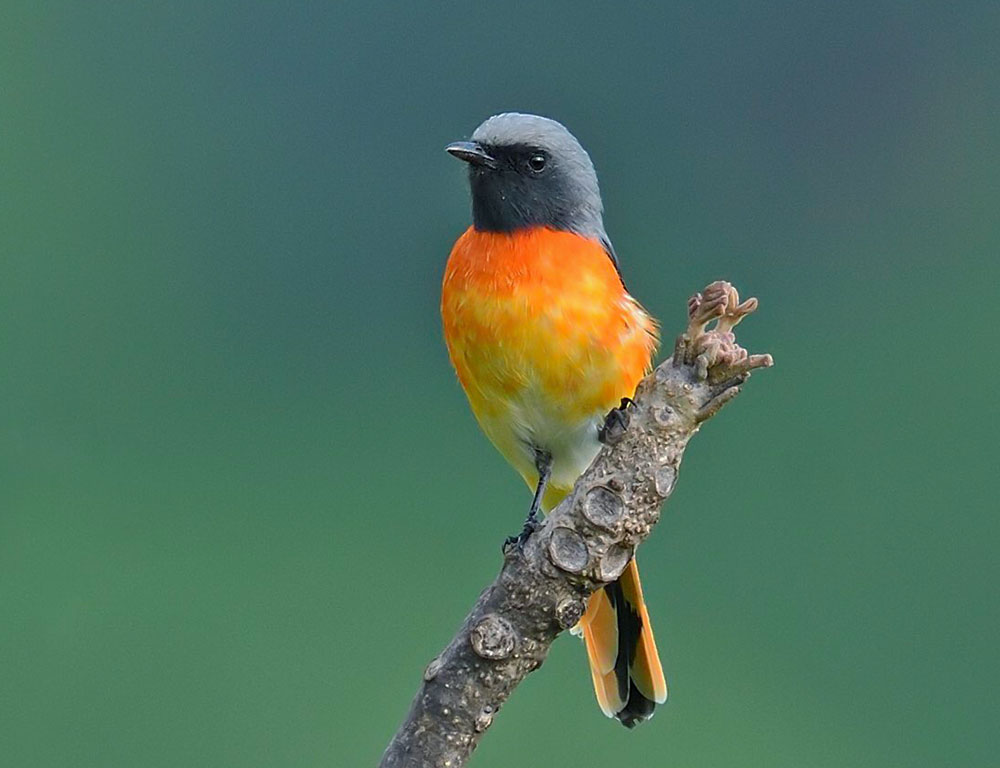
The Small Minivet’s habitat and distribution tell an intriguing story of adaptability and wide-ranging presence across Asia. Here’s a summary:
Range
The Small Minivet is predominantly found in Asia, extending from the Indian subcontinent to Southeast Asia. It is commonly observed in India, Nepal, Bhutan, Bangladesh, Myanmar, Thailand, Cambodia, and Vietnam.
Habitat Preference
- Forests: They primarily inhabit forests, including both deciduous and evergreen types.
- Adaptability: While they prefer dense woodland, they can also be found in scrubland or rural gardens.
Elevation
Their distribution varies with elevation. In the Himalayas, they are typically found at heights ranging from 600 to 2000 meters above sea level during summer. In winter, they descend to warmer lowland forests.
Population Estimates
- India: The population of Small Minivets in India is estimated to be over 1 million pairs, indicating a significant presence in the region.
- Nepal, Bhutan, Myanmar: Population estimates are not readily quantified for these regions.
- Bangladesh: There are reportedly a few thousand pairs of Small Minivets in Bangladesh.
Diet and Feeding Behavior of the Small Minivet
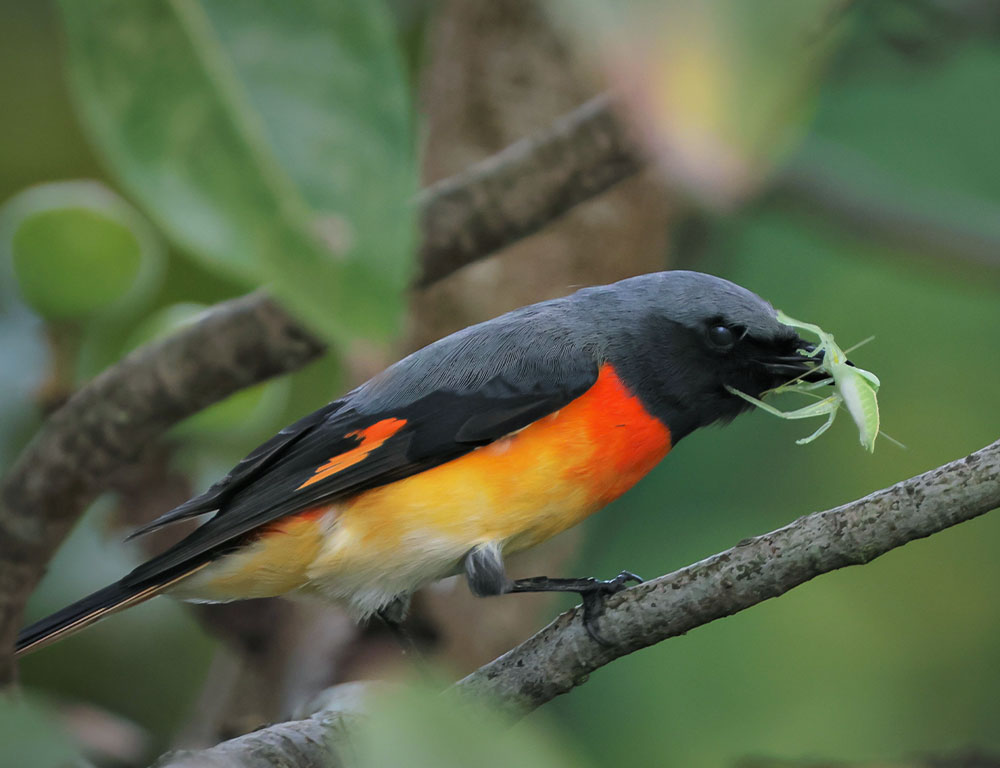
The diet and feeding behavior of the Small Minivet reveal fascinating aspects of its ecological niche and survival strategies. Here’s a summary:
Diet
- Main Food Source: The Small Minivet primarily feeds on insects, categorizing it as an insectivore. Its diet includes small beetles, caterpillars, and other invertebrates.
- Prey Preference by Season: During the breeding season, Small Minivets increase their consumption of caterpillars, which provides a nutritional boost necessary for egg formation and feeding nestlings. In the non-breeding season, they tend to favor beetles.
Feeding Behavior
- Aerial Sallying: Small Minivets employ a unique hunting technique known as ‘aerial sallying’, where they catch insects mid-air during flight. This demonstrates their remarkable agility and hunting prowess.
- Group Hunting: They often hunt in mixed-species flocks, with Small Minivets sometimes leading these groups. Group hunting enhances efficiency in finding food sources and reduces predation risk.
Seasonal Variation
- Breeding Season: Small Minivets intensify their consumption of caterpillars during the breeding season to meet the increased nutritional demands for reproduction and chick rearing.
- Non-Breeding Season: Their diet may shift towards other prey items like beetles when breeding activities are reduced.
Breeding and Reproduction Habits of Small Minivets
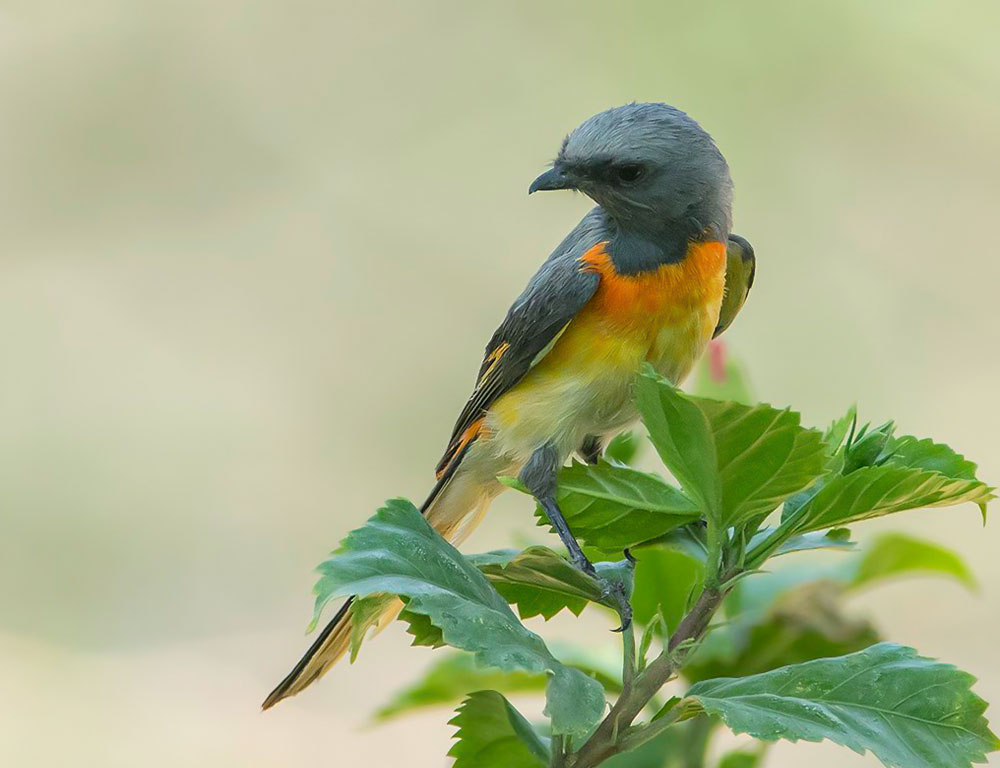
Small Minivets’ breeding and reproduction habits are fascinating and showcase the intricate strategies these birds employ to ensure the survival of their species.
Let’s delve deeper into the key aspects of their breeding and reproduction:
Breeding Season
Small Minivets typically breed from May to June. However, this period can vary depending on the region, sometimes extending until September.
Nest Building
During the breeding season, Small Minivets pair up and construct nests. These nests are meticulously crafted compact cups made from fine grasses and fibers, often reinforced with cobwebs.
They are strategically placed amidst dense foliage or on thin branches high above ground level to protect the eggs from predators.
Number of Eggs per Clutch
The female Small Minivet lays between two to five eggs per clutch. These eggs are beautifully colored pale pink with reddish-brown spots sprinkled around one end.
Incubation Period
Both male and female Small Minivets take turns incubating the eggs over approximately two weeks until they hatch.
Fledging Period
Once the chicks hatch, both parents continue to share responsibilities. The chicks are initially blind featherless, but robust. They are fed insect-based diets and protected from potential threats until they fledge, which occurs about 15 days post-hatching.
Mating Behavior
Mature Small Minivets mate multiple times throughout the breeding season, ensuring their species’ successful propagation despite being frequently preyed upon by larger predatory birds.
Conservation Status of Small Minivet
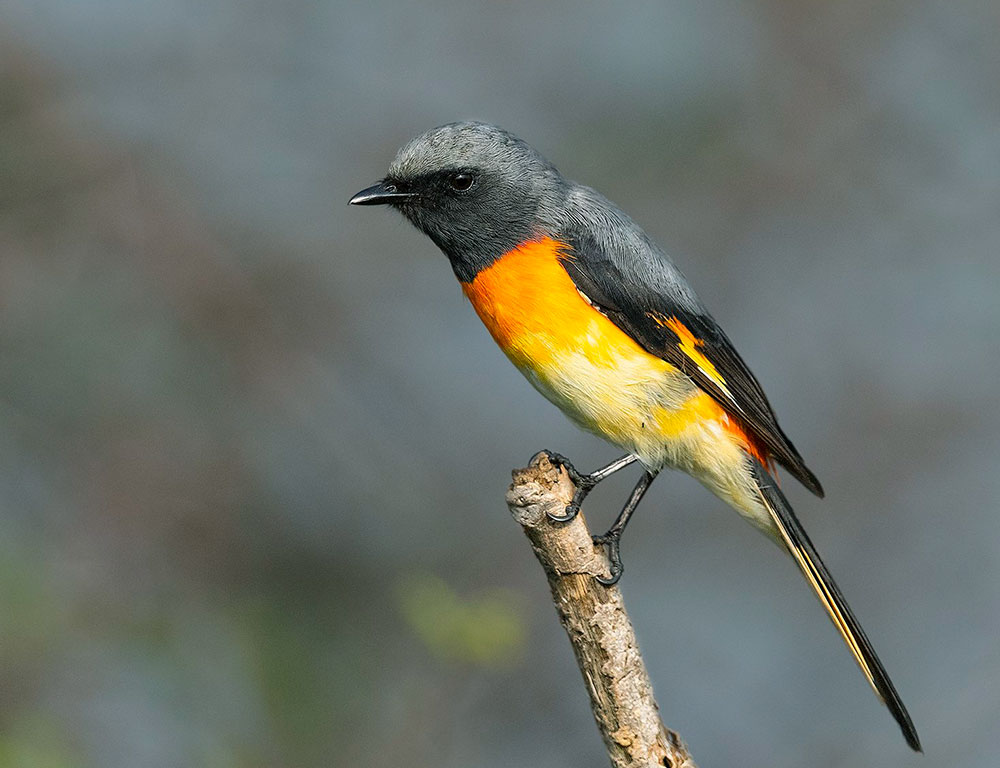
The conservation status of the Small Minivet, classified as “Least Concern” by the International Union for Conservation of Nature (IUCN), indicates that the species is not currently facing immediate threats of extinction due to its substantial or stable population.
However, it’s essential to understand the nuances behind this classification and the potential challenges the species may encounter:
Population Size
While Small Minivets’ exact global population size is not precisely known, estimates suggest a range between 50 million to 500 million mature individuals. This wide range reflects uncertainty in population assessments.
Habitat Fragmentation
As with many bird species globally, one of the primary concerns for Small Minivets is habitat fragmentation.
Human activities such as deforestation and urban development lead to the fragmentation of their natural habitats, impacting their ability to find suitable nesting sites and resources.
Climate Change
Another significant issue affecting Small Minivets is climate change. Rising temperatures can disrupt nesting patterns and alter the availability of food resources, ultimately affecting breeding success rates and overall survival.
Conclusion
The journey through the world of the Small Minivet has been captivating and enlightening. These birds, with their vibrant colors and adaptability, showcase the wonders of nature.
From their striking coloration to their ability to thrive in various habitats, Small Minivets exemplify resilience and versatility. Their diet, breeding habits, and role in controlling pest populations highlight their significance in maintaining ecological balance.
Observing wildlife, including Small Minivets, teaches us respect, resilience, and biodiversity. As we wrap up this exploration, let’s be inspired by the Small Minivet’s tenacity and vibrancy.
Let’s continue to appreciate and celebrate remarkable beings like the Small Minivet, recognizing their contributions to our ecosystems and learning from their ability to stand out confidently in diverse environments.
Let’s cherish and protect these beautiful creatures for future generations to enjoy.
